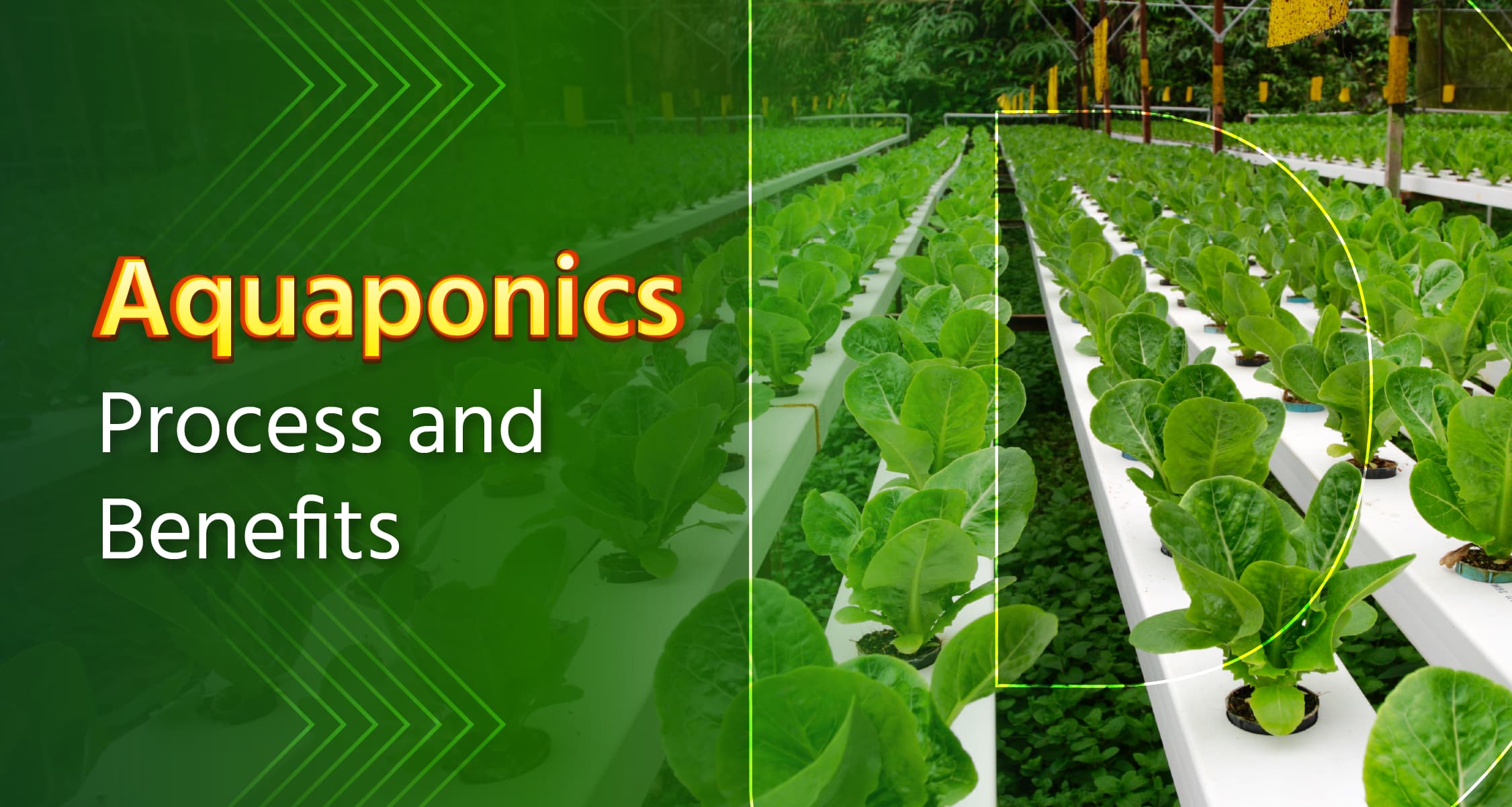Aquaponics: Process and Benefits

Every day, new technological innovations are occurring in almost every field. The agricultural sector is no exception, witnessing several unique innovations. One such innovation is aquaponics farming. In the coming years, the increasing population, coupled with decreasing arable land and dwindling water levels, could pose a significant challenge for agriculture, particularly in terms of irrigation water scarcity. In this scenario, aquaponics farming could be a vital solution. Through aquaponics farming, both fish farming and vegetable cultivation can be carried out in limited spaces. Let's understand its details elaboratively.
What is Aquaponics?
- Aquaponics is the combination of aquaculture and hydroponics.
- Through this technique, vegetables are grown in water along with fish farming.
How is Aquaponics done?
- In this process, fish are bred in large tanks or ponds.
- The amount of ammonia in the water increases from the waste of fish.
- This water is then put into tanks of vegetables, ensuring the plants receive essential nutrients.
- After plants absorb nutrients, the water is returned to the fish tanks.
- This cycle continues.
Which Plants can be Cultivated using the Aquaponics Method?
- Leafy vegetables, along with tomatoes, cucumbers, peppers, strawberries, lettuce, bananas, spinach, basil, mint, and other herbs, can be successfully grown using aquaponics technology.
Benefits of Aquaponics Farming
- Water Conservation: Despite relying solely on water for cultivation, aquaponics farming uses 90% less water compared to traditional agriculture. Due to less water usage, agriculture is feasible even in water-deficient areas.
- Increased Yield: Utilizing aquaponics techniques for crop cultivation can lead to a significant increase in productivity, with yields enhanced by 20 to 25 percent.
- Additional Income: Alongside cultivating crops, aquaponics also involves fish farming, providing farmers with extra income.
- Reduced Fertilizer Usage: Fish water tends to have higher levels of ammonia. Plants absorb necessary nutrients from water, reducing the need for traditional fertilizers and chemicals compared to conventional farming.
- Quality Enhancement: Implementing this method leads to high-quality produce. Plants thrive, yielding more nutritious crops.
- Agriculturally Viable Land: Aquaponics allows successful cultivation even in non-arable land. It can be easily practiced in saline, arid, sandy soils, etc.
- Year-Round Production: The aquaponics system, whether installed indoors or in a greenhouse, regulates the environment, enabling year-round cultivation despite adverse weather conditions.
- Reduced Disease and Pest Incidence: With aquaponics, the likelihood of plant diseases and pest outbreaks decreases upon growth. Moreover, weed problems are also minimized.
Challenges of Aquaponics Farming
- Cost Intensive: Setting up an aquaponics system requires a higher initial investment. Moreover, even minor mishaps can disrupt the entire system. Electricity is required for pumps, heaters, and other equipment, leading to increased agricultural expenses.
- Lack of Technical Knowledge: Inadequate knowledge about fish farming, bacteria, and plant cultivation can lead to significant losses.
- Limited Crop Variety: Not all crops can be cultivated using this technique. Farmers are restricted to growing leafy vegetables and a few small plants.
- Dependency on Electricity: Electricity is essential for running circuits, motors, etc. Utilizing this technique in areas with electricity shortages poses a significant challenge.
Where in India is Aquaponic Farming Practiced?
Near Kochi lies a small village called Cherai, which holds the honor of being the country's first aquaponic village. Since 2016, aquaponic farming has been practiced here. Meanwhile, Madhavi Farms in Bangalore is the country's first and largest aquaponic farm. Now, aquaponic farming is being successfully implemented in various regions of the country.
Have you adapted the aquaponics farming method to grow crops? Share your response with us in the comments. For more insights into modern agricultural techniques, follow the 'Krishi Tech' channel now. Also, don't forget to like and share this post.
Frequently Asked Questions (FAQs)
Q: What is the difference between hydroponics and aquaponics?
A: Both hydroponics and aquaponics are techniques used to grow plants without soil, solely in water. In hydroponic farming, essential nutrients are delivered to the plants through water. Conversely, in aquaponic technique, alongside growing plants in water, fish cultivation is also practiced. Plants receive necessary nutrients from the waste of the fish.
Q: How much does it cost to start an aquaponics farm?
A: Compared to traditional farming, aquaponics farming incurs higher costs. Due to the substantial investment required to establish an aquaponics farm, its adoption is limited, and small-scale farmers often cannot afford this technology. The cost of starting an aquaponics farm can range from ₹5,00,000 to ₹1,500,000. The expenses vary depending on its size. However, adopting this method can potentially double the profits in a few years.
Q: What is aquaponics farming?
A: Aquaponics farming is a modern agricultural system in which plants are grown without soil, and, fish are also raised. In this process, water from the fish tanks is circulated into the plants, and after a few days, the water from the plants is filtered and returned to the fish tanks. This helps in water conservation. Farmers do not require arable land to practice this farming method.
Please login to continue

Get free advice from a crop doctor
